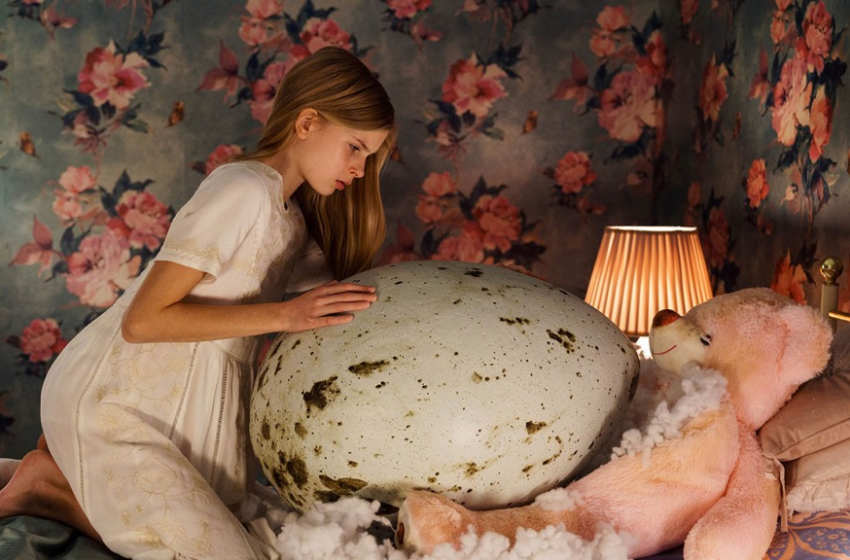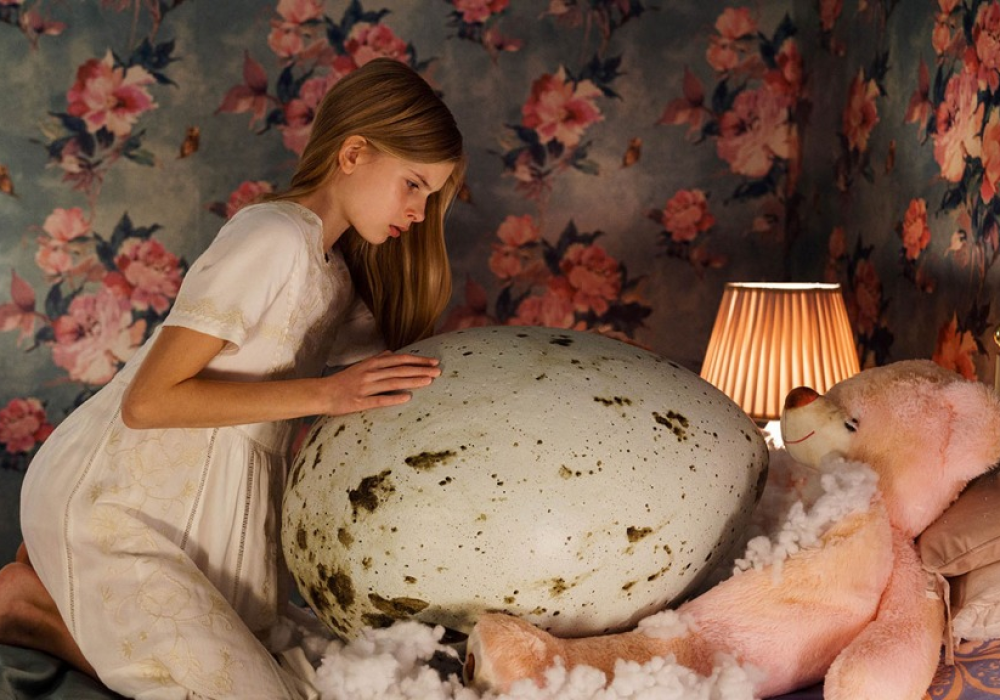More often than not in classic dark fairy tales, mothers are notable by their absence, frequently making way for sinister stepmothers. By contrast, in Finnish director Hanna Bergholm’s compellingly creepy first feature, Hatching, the syrupy sweet mother is a suffocating presence; her fixation with creating a pristine picture of domestic harmony instead contributes to the birth of a monster. A highly original coming-of-age thriller in which a troubled pre-adolescence sparks a horrifically physical war between the ego and the id, this body-horror nightmare explores what happens to the maternal instinct when love is replaced by an unnatural obsession with perfection.
Premiering in the Sundance festival’s Midnight section ahead of IFC’s April 29 release, this expertly handcrafted film features a bizarro animatronic creature that recalls elements of everything from Alien to Jurassic Park. But the narrative engine is very much tortured human relationships, again demonstrating that some of the most effective elevated horror of late has come from women filmmakers.
Hatching
The Bottom Line
Eggs over uneasy.
Release date: Friday, April 29
Venue: Sundance Film Festival (Midnight)
Cast: Siiri Solalinna, Sophia Heikkilä, Jani Volanen, Oiva Ollila, Reino Nordin
Director: Hanna Bergholm
Screenwriter: Ilja Rautsi; story by Rautsi, Hanna Bergholm
1 hour 27 minutes
Accompanied by soft, distant music from Steig Berge Svensen with vocals both lilting and disquieting, the opening images have DP Jarkko T. Laine’s camera floating over an immaculate community of identical-looking homes, the streets separating them eerily empty aside from a cawing bird.
In one house, 12-year-old gymnast Tinja (Siiri Solalinna) goes through her stretching exercises while her mother (Sophia Heikkilä) flutters about with a camera and selfie stick, shooting scenes for her video blog, “Lovely Everyday Life.” She’s Mary Poppins as a Real Housewife. Dad (Jani Volanen) responds to his work being interrupted with a jolly laugh, and Tinja’s kid brother Matias (Oiva Ollila) is like a beaming mini-me version of his father, albeit with a weird edge.
Production designer Päivi Kettunen’s interiors are all soothing pastels and rose-strewn wallpapers, fully coordinated by costumer Ulrika Sjölin with the family’s outfits. But there’s something vaguely sickly about this carefully manicured environment, something a little off. That soon becomes magnified when a crow comes crashing through a window, causing maximum chaos as it swoops around the living room, sending vases, glassware, lamps and even a chandelier crashing down.
Tinja eventually captures the feathered intruder, cradling it gently in a throw rug and moving to release it outside. But her mother instead tells her to hand it over, snapping the bird’s neck with a smile and then instructing Tinja to dump it outside in the recycling bin with the organic waste.
Life seems to return to meticulously ordered “normal” soon after. Tinja meets a friendly new neighbor, Reetta (Ida Määttänen), around her age, but the girl’s dog tries to bite her. Tinja’s mom busies herself editing a new intro to her blog, with idyllic slo-mo scenes of the family at play and saccharine images of mother and daughter wearing matching floral crowns right out of Midsommar. When Tinja walks in on her mother kissing the handyman, Tero (Reino Nordin), she explains to her daughter that he’s a “special friend” who fulfils needs that her effete father doesn’t. But she asks Tinja to keep it a secret, “between us girls.”
The rot behind this Stepford construct is evident long before Tinja finds the bird missing from the trash and near death in the woods by the house with a freshly laid egg. Tinja takes the egg home, nestling it in her pink teddy bear to be hatched. The egg grows at an accelerated rate to the size of a boulder, eventually birthing a freakish creature both repulsive and endearingly needy, which Tinja hides from her family under her bed or in her closet.
Meanwhile, Tinja’s mother oversees her progress in gym class at school, where her tryouts for the final competition spot are threatened by the prowess on the beams of Reetta. This of course doesn’t fit with the mother’s painstakingly planned family narrative, in which Tinja already is struggling to play her part. Ilja Rautsi’s screenplay is full of sharp observations of the ways in which reluctance to disappoint a demanding parent can instill crippling fear in a child. That anxiety is written all over the intense features of the young Solalinna, a striking presence in her first screen role.
The less you know about what follows the better, but the hatching of the title is an incident of wonder and mystery, ushering into the story a strange, goopy, unpredictable presence that also provides companionship, even comfort to emotionally isolated, friendless Tinja. As the creature grows, it sheds characteristics of the species from which it came, taking on a more disturbing aspect and developing instincts of its own.
Those uncontrollable instincts seem to stem directly from a psychic connection with Tinja, whose crueler impulses are manifested with shocking brutality, putting everyone from Reetta through Tinja’s mother in danger. When the latter’s extramarital relationship with Tero is threatened, a ferocious clash between mother and daughter ensues.
Bergholm’s assured visual sense and command of tone are matched by nuanced work from the actors, particularly Solalinna, both aghast and queasily complicit in the creature’s rampage; and Heikkilä — a Scandinavian Elisabeth Moss — who deftly shows the ugly cracks in the mother’s controlled veneer. As the soulful carpenter who represents a bridge to a less stifling existence, with his rustic fixer-upper home and his willingness actually to listen to Tinja, Nordin provides a more grounded contrast to characters bound by the artificial world they’ve built around themselves.
A fascinating window into the psychological and emotional minefield of early puberty and the torn feelings of a vulnerable child watching her darkest instincts play out, Hatching delivers.










